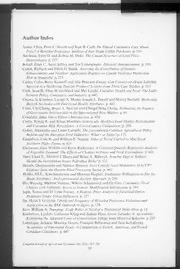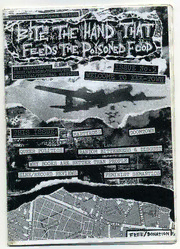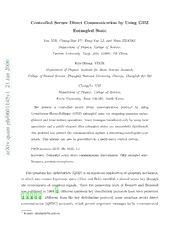
Fundamental Algorithms in Computational Fluid Dynamics PDF
Preview Fundamental Algorithms in Computational Fluid Dynamics
Scientific Computation Thomas H. Pulliam David W. Zingg Fundamental Algorithms in Computational Fluid Dynamics Fundamental Algorithms in Computational Fluid Dynamics Scientific Computation Editorial Board J.-J. Chattot, Davis CA, USA P. Colella, Berkeley CA, USA R. Glowinski, Houston TX, USA M. Y. Hussaini, Tallahassee FL, USA P. Joly, Le Chesnay, France D. I. Meiron, Pasadena CA, USA O. Pironneau, Paris, France A. Quarteroni, Lausanne, Switzerland and Politecnico of Milan, Milan, Italy J. Rappaz, Lausanne, Switzerland B. Rosner, Chicago IL, USA P. Sagaut, Paris, France J. H. Seinfeld, Pasadena CA, USA A. Szepessy, Stockholm, Sweden M. F. Wheeler, Austin TX, USA For furthervolumes: http://www.springer.com/series/718 Thomas H. Pulliam David W. Zingg • Fundamental Algorithms in Computational Fluid Dynamics 123 ThomasH.Pulliam David W.Zingg NASA Ames Research Center InstituteforAerospace Studies Mountain View, CA Universtiyof Toronto USA Toronto, ON Canada ISSN 1434-8322 ISBN 978-3-319-05052-2 ISBN 978-3-319-05053-9 (eBook) DOI 10.1007/978-3-319-05053-9 Springer ChamHeidelberg New YorkDordrecht London LibraryofCongressControlNumber:2014933569 (cid:2)SpringerInternationalPublishingSwitzerland2014 Thisworkissubjecttocopyright.AllrightsarereservedbythePublisher,whetherthewholeorpartof the material is concerned, specifically the rights of translation, reprinting, reuse of illustrations, recitation,broadcasting,reproductiononmicrofilmsorinanyotherphysicalway,andtransmissionor informationstorageandretrieval,electronicadaptation,computersoftware,orbysimilarordissimilar methodology now known or hereafter developed. Exempted from this legal reservation are brief excerpts in connection with reviews or scholarly analysis or material supplied specifically for the purposeofbeingenteredandexecutedonacomputersystem,forexclusiveusebythepurchaserofthe work. Duplication of this publication or parts thereof is permitted only under the provisions of theCopyright Law of the Publisher’s location, in its current version, and permission for use must always be obtained from Springer. Permissions for use may be obtained through RightsLink at the CopyrightClearanceCenter.ViolationsareliabletoprosecutionundertherespectiveCopyrightLaw. The use of general descriptive names, registered names, trademarks, service marks, etc. in this publicationdoesnotimply,evenintheabsenceofaspecificstatement,thatsuchnamesareexempt fromtherelevantprotectivelawsandregulationsandthereforefreeforgeneraluse. While the advice and information in this book are believed to be true and accurate at the date of publication,neithertheauthorsnortheeditorsnorthepublishercanacceptanylegalresponsibilityfor anyerrorsoromissionsthatmaybemade.Thepublishermakesnowarranty,expressorimplied,with respecttothematerialcontainedherein. Printedonacid-freepaper SpringerispartofSpringerScience+BusinessMedia(www.springer.com) To Harv Lomax and Joe Steger Preface The field of computational fluid dynamics (CFD) has matured substantially over the past 30 years and has proven its worth in numerous areas of science and engineering.Althoughtherearedifferentnumericalalgorithmsthatcanbeusedto solvetheequationsgoverningfluidflow,thekeyalgorithmicconceptsthatprovide thefoundationsofCFDarebynowwellestablished.Thepurposeofthisbookisto giveadetailedandcomprehensivedescriptionofsomeimportantandwidelyused algorithms. While the field of CFD will continue to evolve, the algorithms described in this book will continue to provide a basis for understanding most numerical approaches to the solution of the Euler and Navier-Stokes equations in the foreseeable future. This book is intended to be used as a textbook, that is, within the context of a course in CFD. It is suitable as either a first or a second course at the senior undergraduateorgraduatelevel.AsaresultofthepopularityofCFD,thenumber ofengineersandscientistsusingithasgreatlyincreased.Manyoftheseuserswill not have a graduate-level education in CFD; hence the field is increasingly being coveredintheundergraduatecurricula.Itisimportanttorecognizethatevenauser (asopposedtoadeveloper)ofCFDneedssomeexposuretotheunderlyingtheory ofbothfluiddynamicsandnumericalalgorithmsinordertomakeintelligentuseof CFD.Thematerialinthisbookisequallyappropriatetobothusersanddevelopers of computational methods for fluid dynamics. In a sense, this is a sequel to our previous book, Fundamentals of Computa- tional Fluid Dynamics, written with Harvard Lomax. Whereas that book deals primarily with simple model equations, this one concentrates on the Euler and Navier-Stokes equations. The two books can be used quite naturally in a two- course sequence.1 However, the present book can also be used as a first course in CFD,aslongasthestudentshavehadsomepreviousexposuretobasicnumerical methods. Chapter 2 provides a concise summary of some of the key ideas in our earlier book.Ouremphasis isagainonadetailedtreatment ofspecific coretopics ratherthanacomprehensivetreatmentoftheentirefield.Moreover,ourfocusison mature algorithms as opposed to those currently under development. 1 TheyhavebeenusedinthismannerattheUniversityofTorontoformanyyears. vii viii Preface Given our emphasis on depth as opposed to breadth, several important topics aredeferred.Examplesincludespatialdiscretizationsonunstructuredgrids,finite- element and spectral methods, and turbulence models, which are left to authors withgreaterexperienceintheseparticularsubjects.Thealgorithmspresentedhere form the basis ofseveral important flow solvers and have been used for countless computations. While many other worthy algorithms exist, understanding and programmingthealgorithmsprimarilyemphasizedinthisbookshouldprovidethe reader with a basis for understanding virtually any algorithm in use today. Akeyfeatureofthistextistheuseofexamplesandprogrammingassignments based on the one-dimensional and quasi-one-dimensional Euler equations. Of course, these equations omit important physics (viscosity, heat conduction, and turbulence) and numerics (factorization, meshing). Nevertheless, a great deal can belearnedfromimplementingandstudyingthealgorithmsinthiscontext,andthe assignments are feasible within a typical one-term course. In order to derive the full benefit of this text, the reader is encouraged to complete the programming assignments associated with each chapter. We present this book in the hope that it will contribute to an intelligent and creative approach to the development and application of CFD. Moffett Field, August 2013 Thomas H. Pulliam Toronto David W. Zingg Contents 1 Introduction . . . . . . . . . . . . . . . . . . . . . . . . . . . . . . . . . . . . . . . . 1 1.1 Background. . . . . . . . . . . . . . . . . . . . . . . . . . . . . . . . . . . . . 1 1.2 Overview and Roadmap . . . . . . . . . . . . . . . . . . . . . . . . . . . . 6 References . . . . . . . . . . . . . . . . . . . . . . . . . . . . . . . . . . . . . . . . . . 8 2 Fundamentals . . . . . . . . . . . . . . . . . . . . . . . . . . . . . . . . . . . . . . . 9 2.1 Model Equations . . . . . . . . . . . . . . . . . . . . . . . . . . . . . . . . . 9 2.1.1 The Linear Convection Equation. . . . . . . . . . . . . . . . . 9 2.1.2 The Diffusion Equation . . . . . . . . . . . . . . . . . . . . . . . 10 2.2 Finite-Difference Methods. . . . . . . . . . . . . . . . . . . . . . . . . . . 11 2.2.1 Basic Concepts: Taylor Series. . . . . . . . . . . . . . . . . . . 11 2.2.2 The Modified Wavenumber . . . . . . . . . . . . . . . . . . . . 14 2.3 The Semi-Discrete Approach. . . . . . . . . . . . . . . . . . . . . . . . . 16 2.3.1 Matrix Difference Operators. . . . . . . . . . . . . . . . . . . . 17 2.3.2 Reduction of PDEs to ODEs. . . . . . . . . . . . . . . . . . . . 20 2.3.3 Exact Solutions of Linear ODEs . . . . . . . . . . . . . . . . . 21 2.3.4 Eigenvalue Spectra for Model ODEs . . . . . . . . . . . . . . 23 2.3.5 A Representative Equation for Studying Time-Marching Methods . . . . . . . . . . . . . . . . . . . . . . 24 2.4 Finite-Volume Methods . . . . . . . . . . . . . . . . . . . . . . . . . . . . 25 2.4.1 Basic Concepts . . . . . . . . . . . . . . . . . . . . . . . . . . . . . 25 2.4.2 One-Dimensional Examples . . . . . . . . . . . . . . . . . . . . 27 2.5 Numerical Dissipation and Upwind Schemes. . . . . . . . . . . . . . 31 2.5.1 Numerical Dissipation in the Linear Convection Equation . . . . . . . . . . . . . . . . . . . . . . . . . 32 2.5.2 Upwind Schemes. . . . . . . . . . . . . . . . . . . . . . . . . . . . 34 2.5.3 Artificial Dissipation . . . . . . . . . . . . . . . . . . . . . . . . . 35 2.6 Time-Marching Methods for ODEs . . . . . . . . . . . . . . . . . . . . 36 2.6.1 Basic Concepts: Explicit and Implicit Methods. . . . . . . 36 2.6.2 Converting Time-Marching Methods to ODEs. . . . . . . . 40 2.6.3 Implementation of Implicit Methods . . . . . . . . . . . . . . 46 ix x Contents 2.7 Stability Analysis. . . . . . . . . . . . . . . . . . . . . . . . . . . . . . . . . 50 2.7.1 Inherent Stability of ODEs . . . . . . . . . . . . . . . . . . . . . 51 2.7.2 Numerical Stability of ODEs. . . . . . . . . . . . . . . . . . . . 52 2.7.3 Unconditional Stability, A-stable Methods . . . . . . . . . . 52 2.7.4 Stability Contours in the Complex kh Plane . . . . . . . . . 53 2.7.5 Fourier Stability Analysis. . . . . . . . . . . . . . . . . . . . . . 55 2.7.6 Stiffness of Systems of ODEs. . . . . . . . . . . . . . . . . . . 56 References . . . . . . . . . . . . . . . . . . . . . . . . . . . . . . . . . . . . . . . . . . 58 3 Governing Equations. . . . . . . . . . . . . . . . . . . . . . . . . . . . . . . . . . 59 3.1 The Euler and Navier-Stokes Equations . . . . . . . . . . . . . . . . . 59 3.1.1 Partial Differential Equation Form. . . . . . . . . . . . . . . . 59 3.1.2 Integral Form . . . . . . . . . . . . . . . . . . . . . . . . . . . . . . 66 3.1.3 Physical Boundary Conditions. . . . . . . . . . . . . . . . . . . 66 3.2 The Reynolds-Averaged Navier-Stokes Equations . . . . . . . . . . 67 3.3 The Quasi-One-Dimensional Euler Equations and the Shock-Tube Problem. . . . . . . . . . . . . . . . . . . . . . . . . 67 3.3.1 Exact Solution: Quasi-One-Dimensional Channel Flow . . . . . . . . . . . . . . . . . . . . . . . . . . . . . . 68 3.3.2 Exact Solution: Shock-Tube Problem. . . . . . . . . . . . . . 71 3.4 Exercises. . . . . . . . . . . . . . . . . . . . . . . . . . . . . . . . . . . . . . . 73 References . . . . . . . . . . . . . . . . . . . . . . . . . . . . . . . . . . . . . . . . . . 74 4 An Implicit Finite-Difference Algorithm . . . . . . . . . . . . . . . . . . . . 75 4.1 Introduction. . . . . . . . . . . . . . . . . . . . . . . . . . . . . . . . . . . . . 75 4.1.1 Implicit Versus Explicit Time-Marching Methods . . . . . 76 4.2 Generalized Curvilinear Coordinate Transformation. . . . . . . . . 78 4.2.1 Metric Relations . . . . . . . . . . . . . . . . . . . . . . . . . . . . 81 4.2.2 Invariants of the Transformation . . . . . . . . . . . . . . . . . 83 4.2.3 Navier-Stokes Equations in Generalized Curvilinear Coordinates . . . . . . . . . . . . . . . . . . . . . . . 84 4.2.4 Covariant and Contravariant Components in Curvilinear Coordinates . . . . . . . . . . . . . . . . . . . . . 85 4.3 Thin-Layer Approximation . . . . . . . . . . . . . . . . . . . . . . . . . . 88 4.4 Spatial Differencing. . . . . . . . . . . . . . . . . . . . . . . . . . . . . . . 89 4.4.1 Metric Differencing and Invariants. . . . . . . . . . . . . . . . 93 4.4.2 Artificial Dissipation . . . . . . . . . . . . . . . . . . . . . . . . . 94 4.4.3 A Nonlinear Artificial Dissipation Scheme. . . . . . . . . . 96 4.5 Implicit Time Marching and the Approximate Factorization Algorithm . . . . . . . . . . . . . . . . . . . . . . . . . . . . 102 4.5.1 Implicit Time-Marching . . . . . . . . . . . . . . . . . . . . . . . 104 4.5.2 Local Time Linearization . . . . . . . . . . . . . . . . . . . . . . 105
Description:The list of books you might like

The 48 Laws of Power

What Happened to You?

The Sweetest Oblivion (Made Book 1)

The 48 Laws of Power
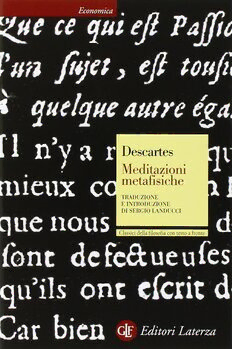
Meditazioni metafisiche

Quasi-optimal convergence rate for adaptive mixed finite element methods

By: Kristine aka KITIN

By Mohamed Farouk Ahmed Mohamed

Games, Ideas and Activities for Primary Drama (Classroom Gems)

Tafseer E Fahm E Quran Vol 1
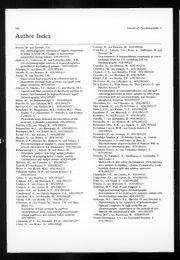
Journal of Chromatography A 1993: Vol 655 Index

Facharztwissen Viszeralchirurgie

Dynamic Simulations of Electric Machinery: Using MATLAB SIMULINK
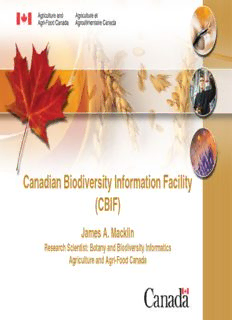
Canadian Biodiversity Information Facility (CBIF)
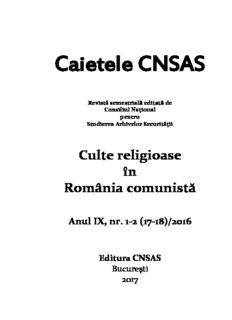
Caietele CNSAS
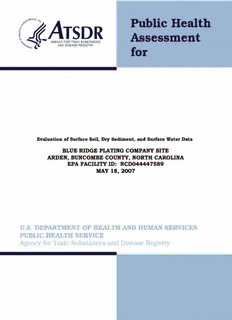
BLUE RIDGE PLATING COMPANY SITE ARDEN, BUNCOMBE
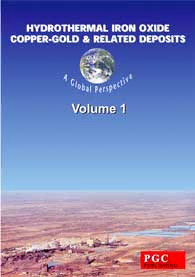
Hydrothermal Iron Oxide Copper-Gold and Related Deposits: A Global Perspective - Volume 1
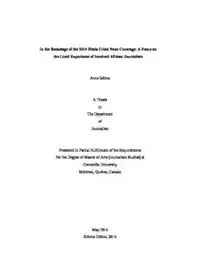
A Focus on the Lived Experience of Involved African Journalists Anne E
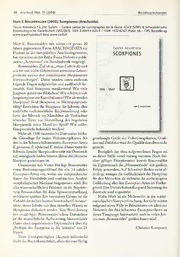
Matt E. Braunwalder (2005): Scorpiones (Arachnida)


